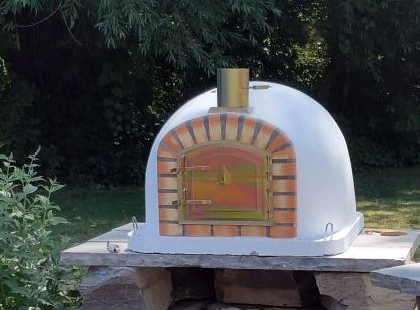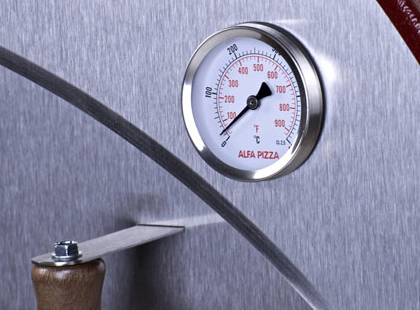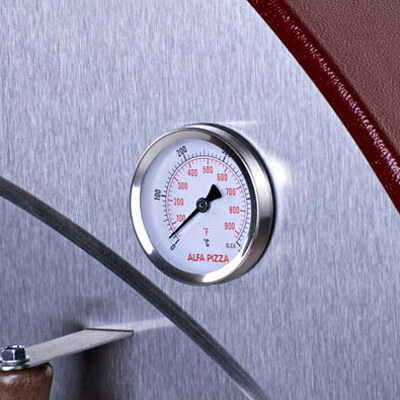
One of the benefits of outdoor ovens is that they reach higher cooking temperatures than conventional ovens. This is partly because of the insulating materials they use but also due to the larger dimensions and cooking space. We’ve put together a temperature guide to help you when cooking in your outdoor oven. Below you will find advice on temperatures for curing your oven and for cooking a variety of foods.
How Hot Can Your Outdoor Oven Get?
Outdoor oven temperatures vary, but usually, 500°F is the limit for cooking. This is very hot and would be the highest temperature you would probably ever cook at. To give you a brief guide of how the temperatures are categorized:
- Cool temperatures – 200°F - 250°F
- Warm temperatures – 300°F
- Moderate temperatures – 350°F
- Hot temperatures – 400°F - 450°F
- Very hot temperature – 450°F and above
Knowing what is classed as hot will also help you when trying to heat your oven. You need to use the thermometer to check the temperature of the base, roof, and sides are all what you intend. Depending on the type of oven you have, the roof or base of the oven can take longer to heat. Always check the oven is the same temperature throughout before cooking to ensure food cooks thoroughly throughout.
Temperatures For Curing Your Outdoor Oven
We have a comprehensive step-by-step guide showing you how to cure your outdoor oven and this includes what temperature you need to get your oven to on a day-by-day basis.
To summarize, when you first start curing your oven, you shouldn’t reach a temperature higher than 300°F on the first day. You should gradually build this up over four or five days to reach 500°F. You normally increase temperature by 50°F each day as a general rule of thumb.
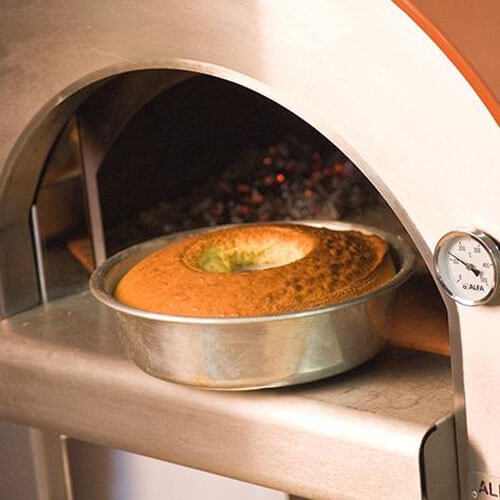
Temperatures For Cooking
When cooking in an outdoor oven, it is normally advised that you heat the oven to its maximum temperature before letting the temperature fall to your desired temperature. For example, let your oven soar to 450°F - 500°F and make sure this temperature is consistent throughout before allowing the temperature to drop to your perfect cooking temperature. Some choose to put their food in as the temperature starts to fall so they get that crispy coat before cooking food throughout.
Below you will find some tips on how to cook certain types of food, including the temperatures ranges for your outdoor oven.
Cooking Pizzas
If you are cooking pizzas in your outdoor oven, you need the oven to be around 450°F. This is the ideal cooking temperature for the perfect pizza, and once heated, your oven should be able to cook pizzas in less than a minute. Pizzas will cook perfectly in the center of the oven, but if you want to create crisper crusts, you may want to position a pizza peel between the fire and the crust. This will smoke your pizza more on this side. After a few seconds, rotate the pizza and repeat until the crust is as you prefer.
Baking in an Outdoor Oven
After firing up your oven, you need to wait until the temperature drops to 160°F - 200°F. This temperature is ideal for baking cakes, but if you are baking bread, your desired temperature is likely to be between 100°F and 160°F. A lot of people bake cakes after they’ve cooked a meal in the oven first when the oven is cooling, as it’s quicker and more convenient to reach those cooler temperatures. When baking, it is important to monitor your cakes or bread throughout and rotate as needed. For the first few minutes, however, you should leave the door closed.
When baking cakes, you may also want to add a lid to your tin to avoid the top of your cake drying out.
Roasting in an Outdoor Oven
After preheating your oven to its maximum temperature, wait for the oven temperature to drop before putting your meat in the oven.
Once the temperature is around 200°F - 300°F, put your roasting tray in the oven. Cover your tray with a lid or some foil and leave to cook in the oven for as long as needed. About ten minutes before your food is finished, remove the foil and let the meat brown. Be sure to check the oven temperature stays between 200°F - 300°F when cooking. For slow cooking roasts, you should opt for the lower temperature of 200°F.
Grilling/Barbecuing in an Outdoor Oven
Outdoor ovens are incredibly versatile, which is why they are so popular for outdoor cooking. It is possible to grill/barbecue in your outdoor oven.
Once your oven is hot throughout, you should let the temperature drop to about 300°F. This is your ideal grilling temperature. Spread the flames around the base of the dome and place your grilling tray on top of the flame. If you prefer not to grill this way, still move the embers around the floor of the oven to ensure the base is warm, and then after a few minutes, move the fire back to the side of the oven. You can then put your tray on the floor.
To grill in your oven, you will need to place a grilling rack on the oven floor. If you have the fire underneath, it is recommended you put a tray on top of the grill to make sure the grease doesn’t get in the fire. If you lay your food on top of the grill without any pots or pans and your fire is at the side, you will need to put some foil down on the oven floor to catch any juices or fat from the food. Juices can be difficult to clean, so it is always recommended you try and catch them.
The time for grilling will depend on the food type, but always make sure any poultry you cook is cooked thoroughly.
*Please note the temperatures in this guide are rough estimations based on past cooking experiences. Some models may differ, but these give you a good idea of where to start when cooking for the first time. Also note we have used Fahrenheit temperatures in our temperature guide.
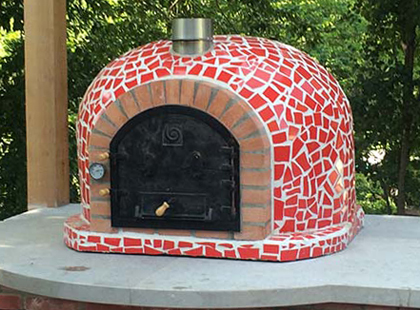
Outdoor Oven Buying Guide
Outdoor ovens come in a variety of styles and designs so it is important when selecting one for your garden that you know what to take into consideration. Our guide offers food for thought when making your decision.

Outdoor Ovens FAQs
To help you choose the right oven for you, we have put together a list of our most frequently asked questions from other customers. From assembly to painting advice, we have a varied list of questions that will hopefully answer all your queries.


